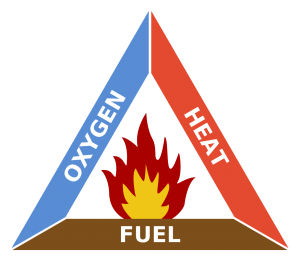Introduction to Intrinsically Safe Radios
An overview of common I.S. standards
What is Intrinsically Safe (IS)?
Hello everyone, and welcome to the latest edition of the Tait Radio Academy.
The development of equipment for explosive atmospheres has evolved over decades to meet an increasing need to keep workers safe and productive while operating around hazardous materials. As technologies and industry advance, exposure to hazardous materials may become more frequent, placing greater demands on the protection mechanisms we employ to keep workers safe.
Intrinsically Safe (or IS) equipment is designed to operate in potentially explosive atmospheres without the risk of becoming an ignition source or creating a spark that might cause a fire or explosion. For an explosion to take place, there must be three things:
1) Fuel (such as gas or dust).
2) Oxygen (air), which mixes with the fuel in the right ratio.
3) A source of heat – either a hot surface or a spark of sufficient energy.
 Generally, Intrinsically Safe addresses the heat aspect of the “fire triangle.” Intrinsic Safety is a protection technique that focuses on preventing sparks or hotspots that might ignite a potentially explosive atmosphere, even under improbable fault conditions.
Generally, Intrinsically Safe addresses the heat aspect of the “fire triangle.” Intrinsic Safety is a protection technique that focuses on preventing sparks or hotspots that might ignite a potentially explosive atmosphere, even under improbable fault conditions.
IS equipment is required in a wide range of industries, from Public Safety and Utilities, to Mining, Petrochemical and Transportation. IS radios allow critical communications to be conducted in hazardous environments where use of non-IS radios could cause a spark and be potentially dangerous. For users or purchasers of equipment for use in potentially explosive atmospheres, Intrinsic Safety is likely to be a key requirement.
In the next lesson, we’ll take a look at the different regulations around the globe.
 Radio Academy
Radio Academy




